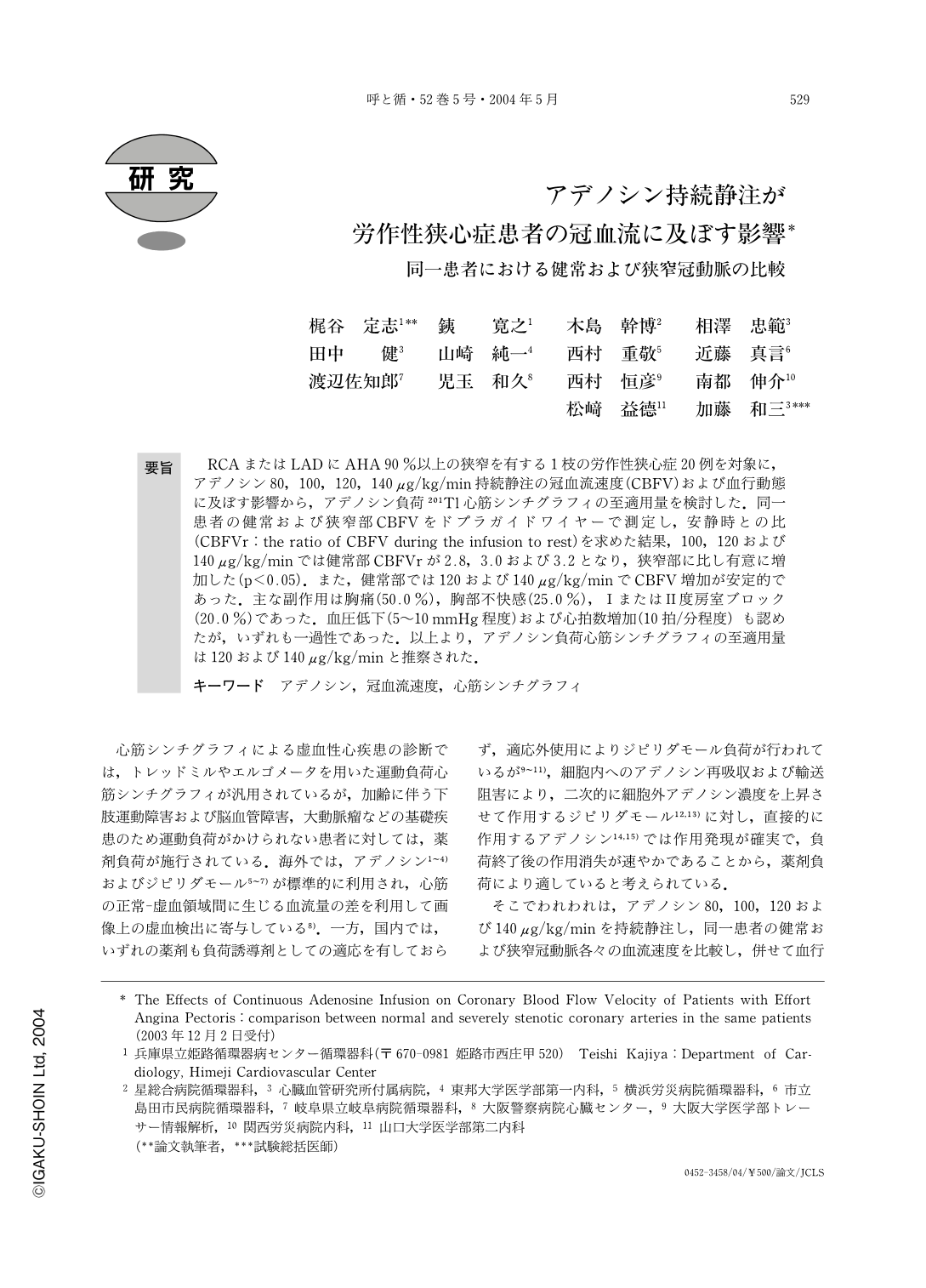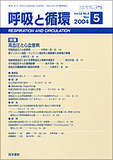Japanese
English
- 有料閲覧
- Abstract 文献概要
- 1ページ目 Look Inside
要旨
RCAまたはLADにAHA90%以上の狭窄を有する1枝の労作性狭心症20例を対象に,アデノシン80,100,120,140μg/kg/min持続静注の冠血流速度(CBFV)および血行動態に及ぼす影響から,アデノシン負荷201Tl心筋シンチグラフィの至適用量を検討した.同一患者の健常および狭窄部CBFVをドプラガイドワイヤーで測定し,安静時との比(CBFVr:the ratio of CBFV during the infusion to rest)を求めた結果,100,120および140μg/kg/minでは健常部CBFVrが2.8,3.0および3.2となり,狭窄部に比し有意に増加した(p<0.05).また,健常部では120および140μg/kg/minでCBFV増加が安定的であった.主な副作用は胸痛(50.0%),胸部不快感(25.0%),ⅠまたはⅡ度房室ブロック(20.0%)であった.血圧低下(5~10mmHg程度)および心拍数増加(10拍/分程度)も認めたが,いずれも一過性であった.以上より,アデノシン負荷心筋シンチグラフィの至適用量は120および140μg/kg/minと推察された.
Summary
We investigated the effects of continuous intravenous infusion of adenosine on the coronary blood flow of patients with effort angina pectoris.
Twenty patients diagnosed as effort angina pectoris with single-vessel disease were studied by coronary angiography.
All the patients had stenotic epicardial coronary artery(≧AHA 90% stenosis excluding complete occlusion) either in RCA or LAD. Their coronary blood flow velocities(hereinafter called CBFV) at both normal and stenotic coronary arteries were measured. Adenosine was infused into the peripheral arm vein according to the dose titration method(80→100→120→140μg/kg/min). The infusion rate was stepped up to the next level only after CBFV returned to the baseline with intervals of longer than two minutes.
The maximal change in CBFVs during the infusion was expressed as CBFVr, which is the ratio of the peak CBFV to the CBFV before the infusion.
CBFVr s at the rate of 100, 120 and 140μg/kg/min in the normal region were 2.8, 3.0 and 3.2 respectively, all of which were significantly higher than those in the stenotic region. In addition, increased CBFVs were stable at the rate of 120 and 140μg/kg/min.
Adverse reactions were observed in 57.9 and 66.7% of cases at the rate of 120 and 140μg/kg/min respectively. These reactions included chest pain, chest discomfort and AV block. Most of them were mild and ended after a short duration.
The study suggested that coronary hyperemia can be achieved safely and stably with intravenous infusions of adenosine at the rate of 120 and 140μg/kg/min.
Both dosages should be able to be used as pharmacologic stress for myocardial perfusion scintigraphy in cases of effort angina pectoris.

Copyright © 2004, Igaku-Shoin Ltd. All rights reserved.


